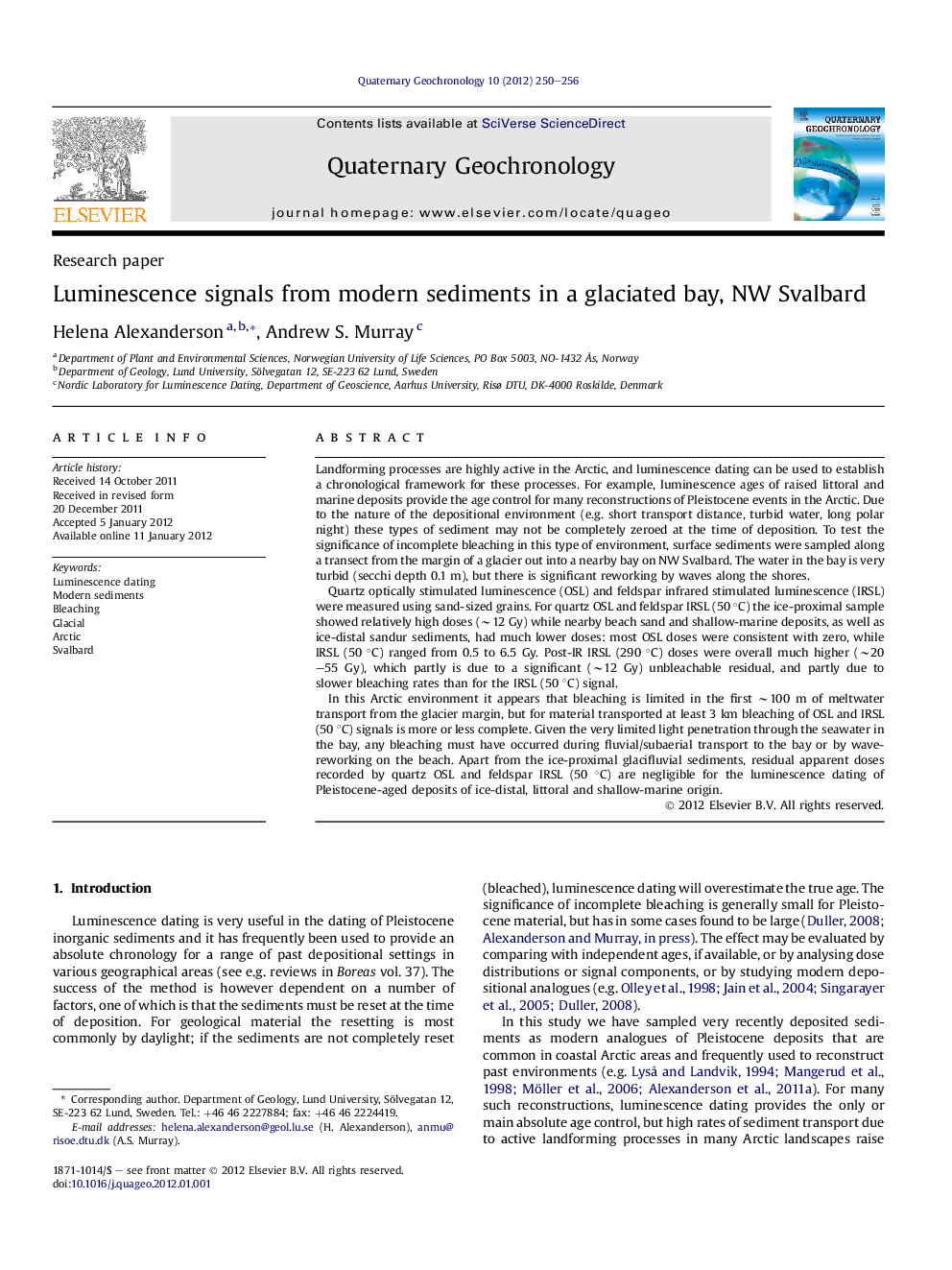| کد مقاله | کد نشریه | سال انتشار | مقاله انگلیسی | نسخه تمام متن |
|---|---|---|---|---|
| 4725130 | 1639866 | 2012 | 7 صفحه PDF | دانلود رایگان |

Landforming processes are highly active in the Arctic, and luminescence dating can be used to establish a chronological framework for these processes. For example, luminescence ages of raised littoral and marine deposits provide the age control for many reconstructions of Pleistocene events in the Arctic. Due to the nature of the depositional environment (e.g. short transport distance, turbid water, long polar night) these types of sediment may not be completely zeroed at the time of deposition. To test the significance of incomplete bleaching in this type of environment, surface sediments were sampled along a transect from the margin of a glacier out into a nearby bay on NW Svalbard. The water in the bay is very turbid (secchi depth 0.1 m), but there is significant reworking by waves along the shores.Quartz optically stimulated luminescence (OSL) and feldspar infrared stimulated luminescence (IRSL) were measured using sand-sized grains. For quartz OSL and feldspar IRSL (50 °C) the ice-proximal sample showed relatively high doses (∼12 Gy) while nearby beach sand and shallow-marine deposits, as well as ice-distal sandur sediments, had much lower doses: most OSL doses were consistent with zero, while IRSL (50 °C) ranged from 0.5 to 6.5 Gy. Post-IR IRSL (290 °C) doses were overall much higher (∼20–55 Gy), which partly is due to a significant (∼12 Gy) unbleachable residual, and partly due to slower bleaching rates than for the IRSL (50 °C) signal.In this Arctic environment it appears that bleaching is limited in the first ∼100 m of meltwater transport from the glacier margin, but for material transported at least 3 km bleaching of OSL and IRSL (50 °C) signals is more or less complete. Given the very limited light penetration through the seawater in the bay, any bleaching must have occurred during fluvial/subaerial transport to the bay or by wave-reworking on the beach. Apart from the ice-proximal glacifluvial sediments, residual apparent doses recorded by quartz OSL and feldspar IRSL (50 °C) are negligible for the luminescence dating of Pleistocene-aged deposits of ice-distal, littoral and shallow-marine origin.
Figure optionsDownload as PowerPoint slideHighlights
► Modern sediments in a glaciated bay were analysed with OSL and IRSL.
► Quartz OSL and feldspar IRSL 50 °C signals are bleached within 500 m of the glacier.
► Feldspar post-IR IRSL 290 °C signals contain a large unbleachable residual.
Journal: Quaternary Geochronology - Volume 10, July 2012, Pages 250–256